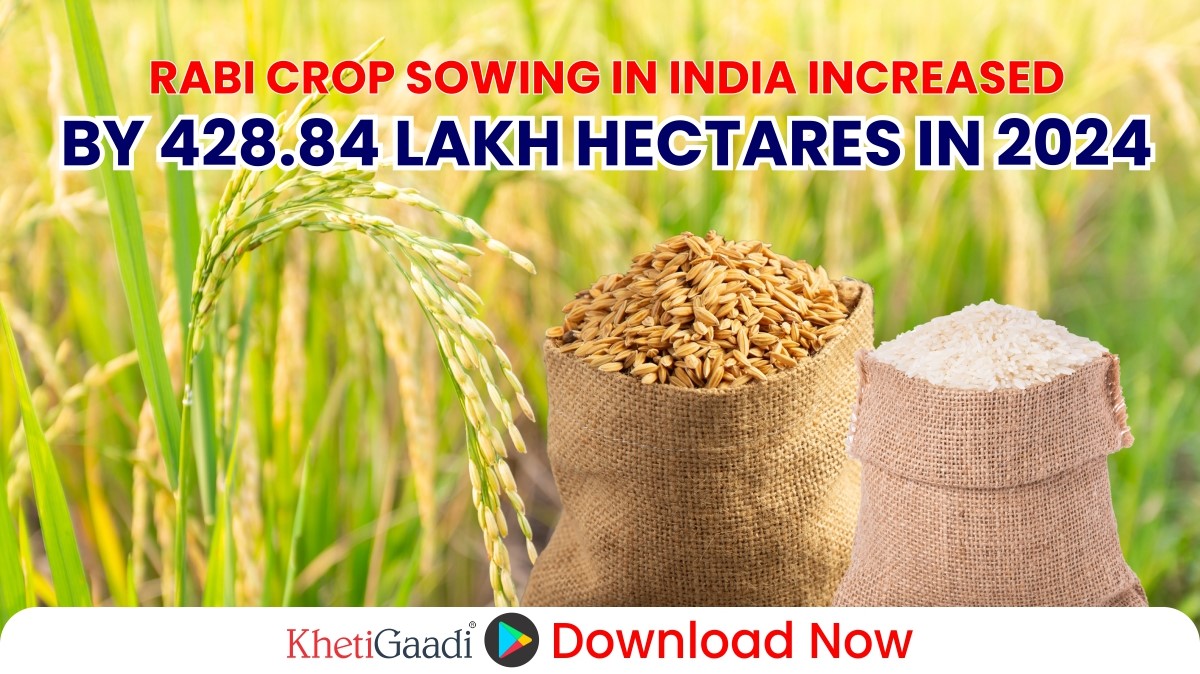Rabi Crop Sowing Crosses 428 Lakh Hectares in 2024-25 Season
The Department of Agriculture & Farmers’ Welfare has released the latest area coverage report for rabi crops, showing a significant achievement as total sowing reached 428.84 lakh hectares as of December 2, 2024. This marks an improvement compared to the 411.80 lakh hectares sown during the same period last year. The report highlights progress in key crops like wheat, pulses, and oilseeds, along with challenges in certain areas such as coarse cereals and some pulses.
KhetiGaadi always provides right tractor information
Wheat Leads the Rabi Charge
Wheat, the staple grain of northern India and the most sown rabi crop, has seen coverage over 200.35 lakh hectares, a noticeable rise from the 187.97 lakh hectares recorded last year. However, this remains below the normal area of 312.35 lakh hectares, suggesting there is still scope for further expansion as the sowing season progresses. Favourable weather and sufficient soil moisture from the monsoon have been contributing factors to this increase.
If you wish to know organic methods to increase your overall cultivation yield, please call KhetiGaadi counsellor on 07875114466 or write an email to connect@khetigaadi.com
- Pulses: A Strong Performer
Pulses continue to play a critical role in India’s agricultural landscape, with sowing reaching 108.95 lakh hectares, compared to 105.14 lakh hectares last year. This category, which includes crops like gram (chickpea), lentil, and field pea, is integral to meeting the protein needs of the Indian population.
- Gram (Chickpea) remains the dominant pulse, covering 78.52 lakh hectares, an increase from 74.39 lakh hectares in 2023-24.
- Lentil, a key pulse for regions like Madhya Pradesh and Uttar Pradesh, has also shown growth, rising to 13.45 lakh hectares compared to 12.77 lakh hectares last year.
However, certain pulses like moong bean and urad bean have witnessed declines in area, highlighting challenges in some regions.
- Oilseeds: Mixed Trends
Oilseeds have been a mixed bag, with the total area sown at 80.55 lakh hectares, slightly lower than the 84.85 lakh hectares recorded during the same period last year.
- Rapeseed & Mustard, the leading oilseed crop, has covered 75.86 lakh hectares, a slight dip from last year’s 80.06 lakh hectares but still demonstrating robust performance given its critical importance to edible oil production.
- Minor oilseeds like, sunflower and sesamum have shown lower coverage, reflecting challenges in specific regions.
Coarse Cereals: A Call for Focus
The sowing of Shri Anna (millets) and coarse cereals stands at 29.24 lakh hectares, up from last year’s 24.67 lakh hectares. However, this remains significantly below the normal area of 53.82 lakh hectares, signalling a need for interventions.
Jowar, the primary coarse cereal, has achieved 17.43 lakh hectares, a notable increase from last year’s 14.06 lakh hectares, thanks to increased demand for this climate-resilient crop.
Barley and maize have also shown incremental progress, but small millets and ragi lag behind, requiring targeted efforts to boost sowing.
A Promising Outlook
The robust start to the rabi sowing season bodes well for India’s agricultural output, with the total area sown already exceeding last year’s numbers at the same time. With favourable weather conditions and continued support from the government, the outlook for the 2024-25 rabi harvest appears optimistic.
Stay tuned with us on our WhatsApp channel for more real time updates on various agriculture related schemes and innovative cultivation methods aimed at supporting our hardworking farmers.
For more detailed information, visit https://khetigaadi.com/ regularly!
To know more about tractor price contact to our executive






